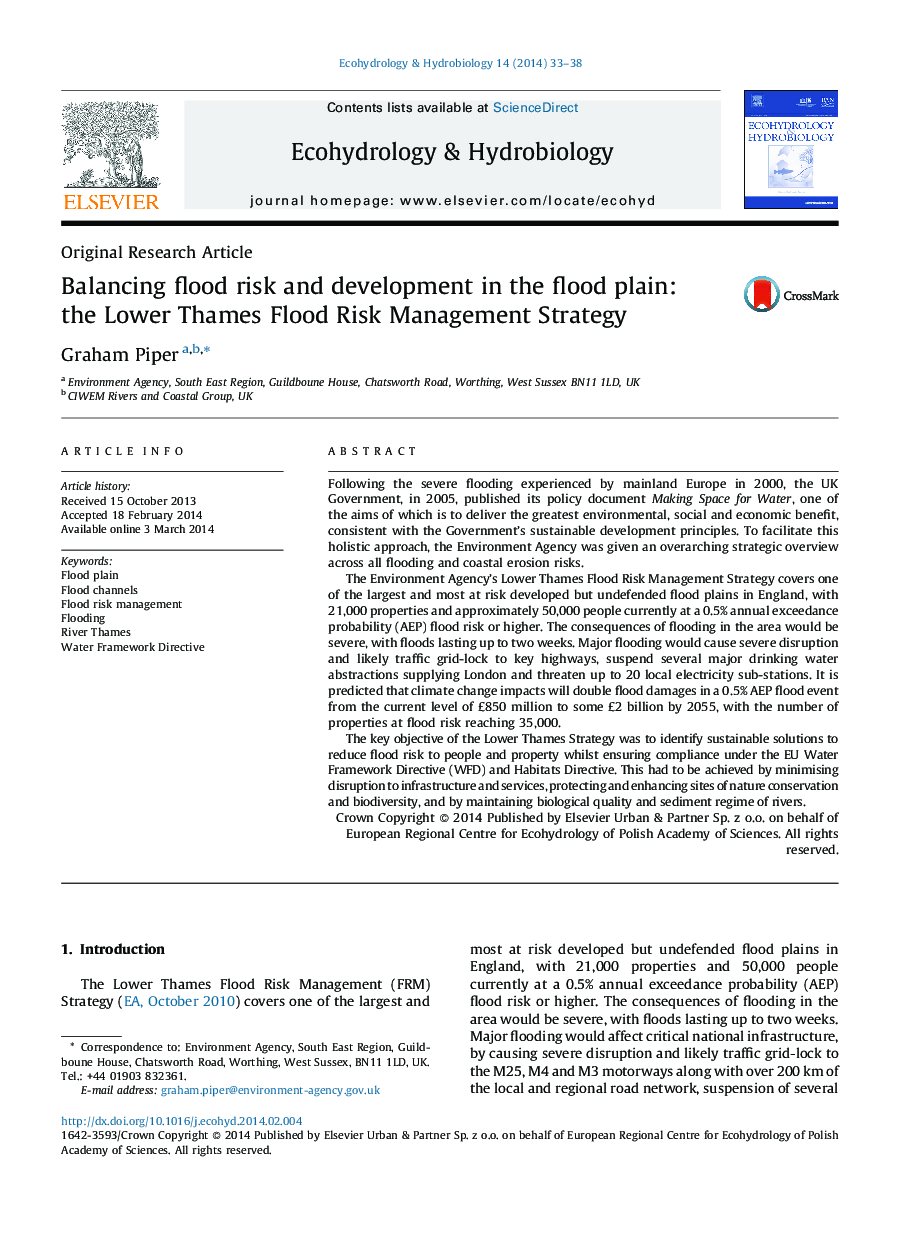| کد مقاله | کد نشریه | سال انتشار | مقاله انگلیسی | نسخه تمام متن |
|---|---|---|---|---|
| 4387981 | 1305071 | 2014 | 6 صفحه PDF | دانلود رایگان |
Following the severe flooding experienced by mainland Europe in 2000, the UK Government, in 2005, published its policy document Making Space for Water, one of the aims of which is to deliver the greatest environmental, social and economic benefit, consistent with the Government's sustainable development principles. To facilitate this holistic approach, the Environment Agency was given an overarching strategic overview across all flooding and coastal erosion risks.The Environment Agency's Lower Thames Flood Risk Management Strategy covers one of the largest and most at risk developed but undefended flood plains in England, with 21,000 properties and approximately 50,000 people currently at a 0.5% annual exceedance probability (AEP) flood risk or higher. The consequences of flooding in the area would be severe, with floods lasting up to two weeks. Major flooding would cause severe disruption and likely traffic grid-lock to key highways, suspend several major drinking water abstractions supplying London and threaten up to 20 local electricity sub-stations. It is predicted that climate change impacts will double flood damages in a 0.5% AEP flood event from the current level of £850 million to some £2 billion by 2055, with the number of properties at flood risk reaching 35,000.The key objective of the Lower Thames Strategy was to identify sustainable solutions to reduce flood risk to people and property whilst ensuring compliance under the EU Water Framework Directive (WFD) and Habitats Directive. This had to be achieved by minimising disruption to infrastructure and services, protecting and enhancing sites of nature conservation and biodiversity, and by maintaining biological quality and sediment regime of rivers.
Journal: Ecohydrology & Hydrobiology - Volume 14, Issue 1, 2014, Pages 33–38
